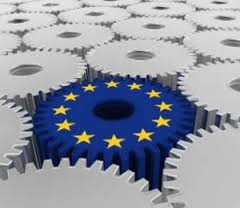 On average through the months of March, April and May, temperatures are expected to exceed the long term average over Spain, France and the UK, while cold anomalies are most likely to occur over the far south-east of Europe and regions surrounding the Black Sea. Signals for Italy, central parts of Europe and Scandinavia are more mixed. Here, similar to the winter just gone, quite volatile swings in temperature are possible from week to week and month to month.
On average through the months of March, April and May, temperatures are expected to exceed the long term average over Spain, France and the UK, while cold anomalies are most likely to occur over the far south-east of Europe and regions surrounding the Black Sea. Signals for Italy, central parts of Europe and Scandinavia are more mixed. Here, similar to the winter just gone, quite volatile swings in temperature are possible from week to week and month to month.
It is most likely that any cold anomalies will occur during the 1st half of spring, with a few colder incursions from the north and north-east possible during in March, especially over Scandinavia and the eastern half of Europe. As spring progresses, a westerly flow and low pressure track developing over northern Europe, and a high pressure ridge located close to Spain and France, should produce a flow pattern that allows widespread mild anomalies to extend over central Europe as well.
Through February, the stratospheric polar vortex has been weaker than normal. It will remain in a weakened state into the first half of March. In past similar years, cold anomalies became quite widespread in March. However, this year there are other pattern drivers that seem likely to act to reduce the extent and frequency of any colder spells, especially for western Europe.
Following an exceptionally dry winter over France and much of the Alps, this spring will average drier than normal over the south-western quarter of Europe, including the western Alps, with the most persistent dry anomalies likely in April and May. This may have implications for spring and summer hydro power output. Scandinavia and the northern UK may see occasional dry and blocked weather patterns at times in March, but with a tendency for wetter conditions to develop here in April and May. Wet conditions, on average throughout the spring, are most likely over the far SE of Europe.
Per ricevere quotidianamente i nostri aggiornamenti su energia e transizione ecologica, basta iscriversi alla nostra newsletter gratuita
e riproduzione totale o parziale in qualunque formato degli articoli presenti sul sito.




















